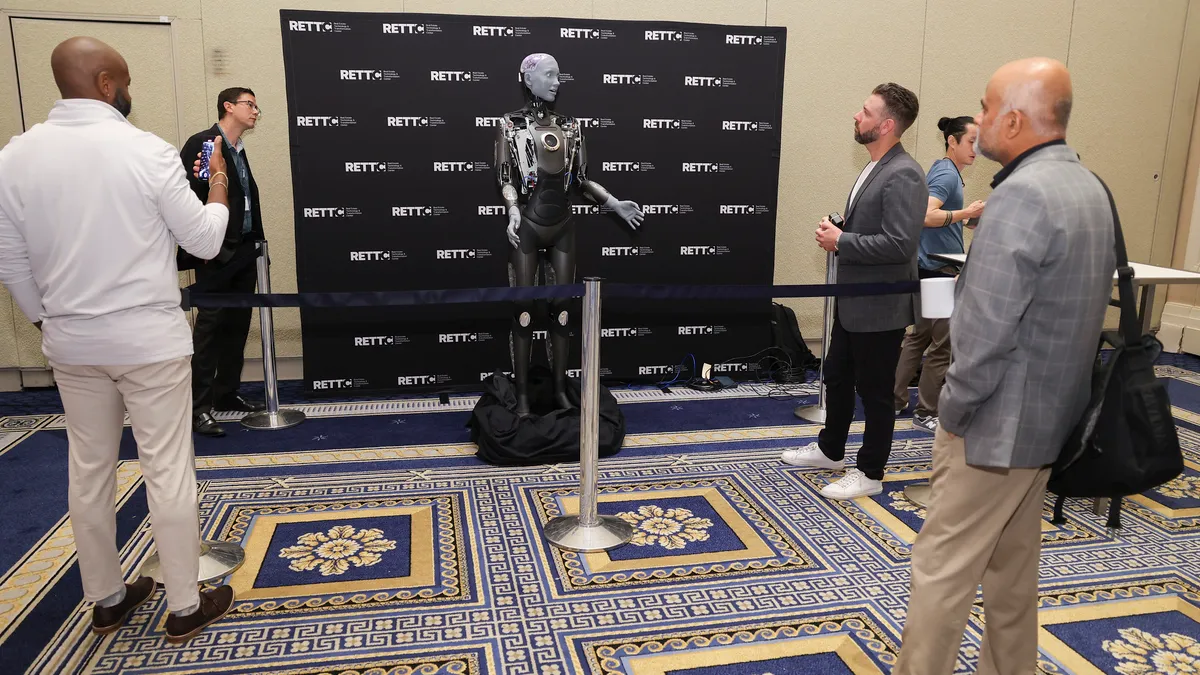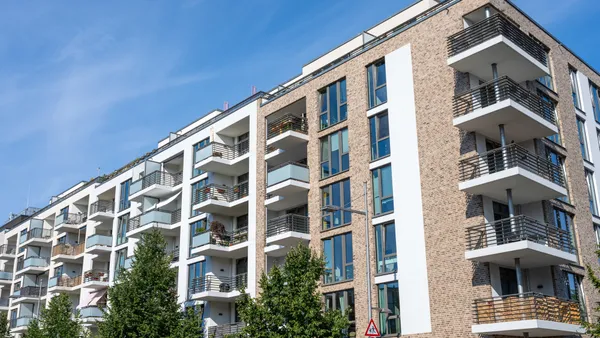Dive Brief:
- While the delivery of a near-record 716,000 new multifamily housing units in the U.S. over the next two years will create a short-term oversupply, the new deliveries are needed to keep long-term fundamentals healthy in the sector, according to new research from Dallas-based commercial real estate services firm CBRE.
- The surge in construction is expected to push the multifamily sector’s overall vacancy rate above equilibrium to a peak of 5.2% from 4.6% by year end, the firm said last week.
- Nevertheless, CBRE expects that demand for rental housing will gain momentum this year as vacancy peaks only slightly above its long run average of 5.0%.
Dive Insight:
Even with a surplus of multifamily units over the short term, CBRE forecasts that an additional 2.3 million new units will be needed nationwide over the next 10 years. Once the largest portion of the delivery wave has concluded through 2024, the U.S. will still need nearly 200,000 additional units annually to maintain proper supply and demand balance.
“While a multifamily development surplus in the next 18 months may weigh on market fundamentals in the short-term, new deliveries will be limited beginning in 2025 and will ultimately lay the foundation for a healthy market throughout the next cycle,” said Kelli Carhart, leader of Multifamily Capital Markets for CBRE in the U.S.
More than 750,000 multifamily units are currently under construction in the U.S. — the highest amount since the housing boom of the 1980s. Most of these new units are in markets such as Dallas; Austin, Texas; and Atlanta that experienced the greatest in-migration during the COVID-19 pandemic.
Although population growth in these markets is beginning to slow, the rapid increase in construction costs due to inflation and supply chain disruptions has caused multifamily starts to slow as well — meaning that the construction peak is likely occurring now, the report said.
Delays ahead?
As the market returns to equilibrium, the report notes that the potential for construction delays and extended timelines due to ongoing labor shortages could also limit the rise in vacancies. Early in the current construction cycle (2013) when the pipeline was approximately 300,000 units (less than half the amount today), the average time of construction from start to finish averaged 16.5 months.
Today, that timeline averages 20.5 months — nearly 25% longer. The biggest jump in that expanded timeline occurred in 2021, when units under construction ramped up tremendously and the COVID-19 pandemic exacerbated supply chain and labor challenges.
The current wave in construction is expected to expand total multifamily inventory in the U.S. by 4.2% over the next two years. Although the sector has recorded negative net absorption over the past three quarters, demand is expected to turn positive in the first half of 2023 and limit the extent to which rising vacancies could slow rent growth, the report said.
While CBRE expects rent growth of 3.5% for the year — down from 6.7% in 2022 and 13.4% in 2021 — this is still relatively healthy when compared with the long-run average of 2.5%
“While a development surplus this year may weigh on near-term market fundamentals, it ultimately will lay the foundation for a healthy market throughout the next cycle,” the report’s authors concluded.
Despite the current market, some developers are focused on continuing to start projects this year because they see those properties opening to a favorable environment with less competition.
“We feel like anything we can get done and which has a unique story is going to outperform because there is going to be limited supply when these projects are delivered in 16 to 24 months,” Brian Oates, executive managing director of development at Atlanta-based developer RangeWater Real Estate told Multifamily Dive.











